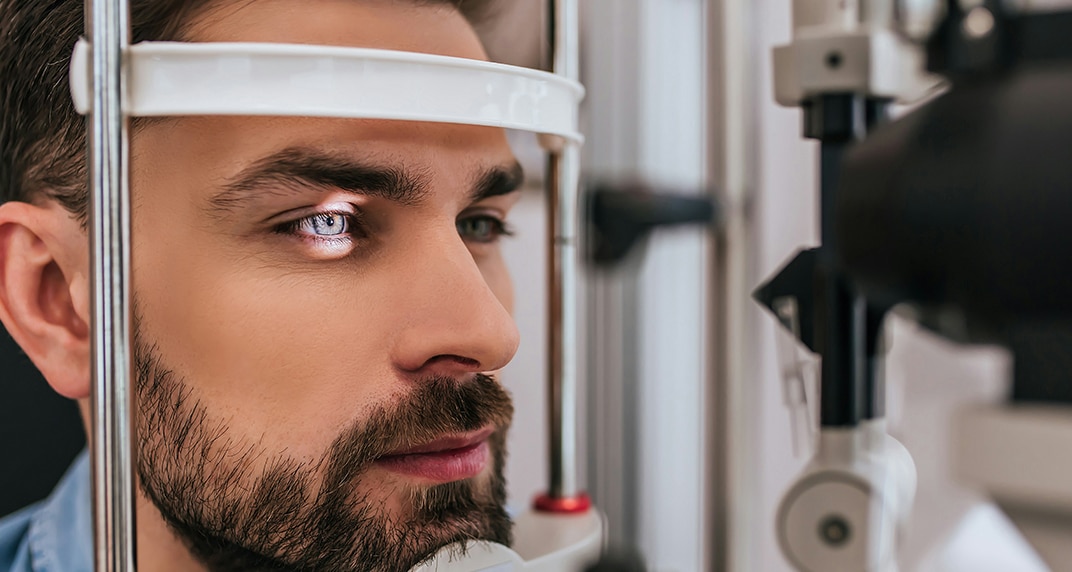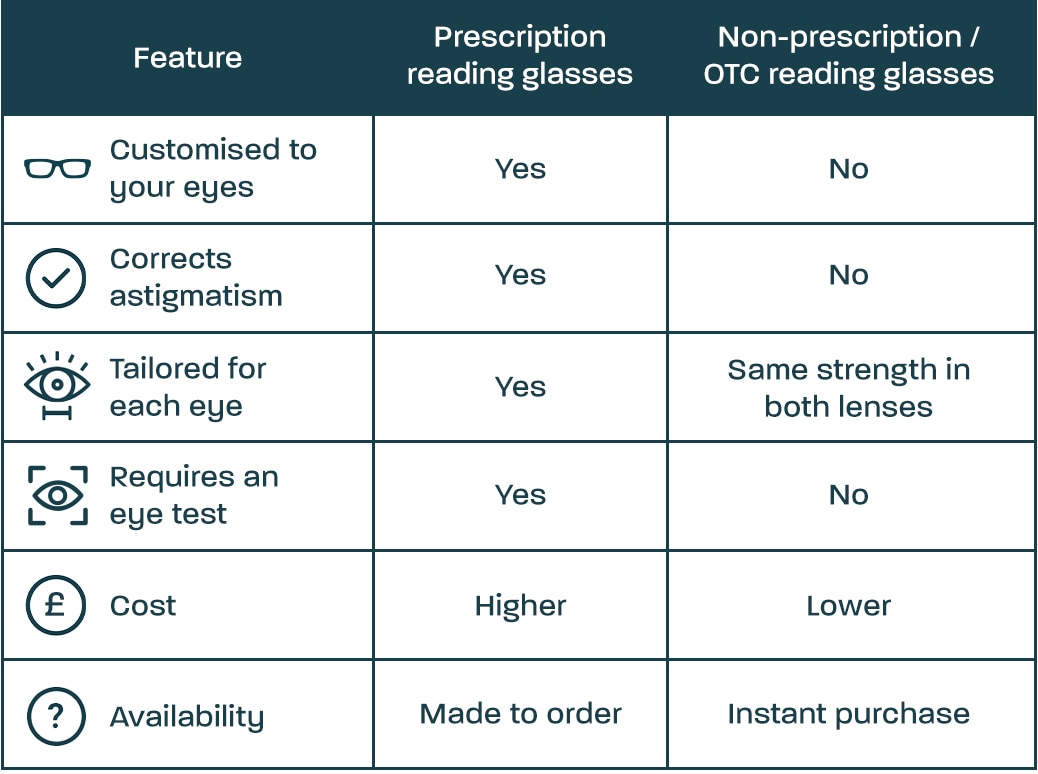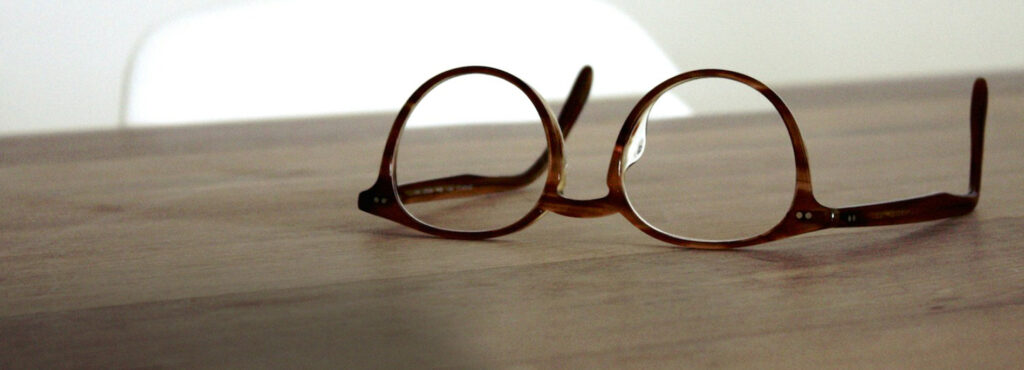Reading glasses are essential pieces of eyewear for billions of people experiencing presbyopia, a natural, age-related change in vision that makes it harder to see up close. When shopping for a pair, you’ll likely come across two main types. These include prescription and non-prescription reading glasses (also known as over-the-counter readers). Understanding the differences can help you choose the right pair for your needs, budget and lifestyle.
Whether you’re a daily reader or someone who enjoys the occasional novel, finding the right reading glasses can enhance your experience and keep your eyes comfortable during those page-turning moments. To celebrate National Book Lovers’ Day (celebrated on 9th August), we’ll highlight the main differences between prescription reading glasses and over-the-counter readers so you can decide which is best for you.


What is presbyopia?
Presbyopia is a common condition where the eye gradually loses its ability to focus on nearby objects. Individuals who experience presbyopia will often hold items at an arm’s length to see them clearly. They may also notice blurry vision when reading menus, texts, or price tags. Presbyopia typically becomes noticeable in people over the age of 40. It’s caused by the natural hardening of the lens inside the eye. As the lens becomes less flexible, it struggles to change shape to focus on close-up tasks like reading or using a phone. Presbyopia is not a disease, but it can occur alongside other eye conditions such as cataracts and glaucoma, both of which become increasingly prevalent with age. That’s why regular eye tests are so important, not only to monitor changes in vision, but also to detect early signs of these underlying health conditions.
Fortunately, after a comprehensive assessment by an eye care professional, presbyopia can be corrected with vision correction options like reading glasses, bifocals, progressive lenses, or even contact lenses.


What are prescription reading glasses?
Prescription reading glasses are tailored specifically to your eyes based on your most recent eye test conducted by either a qualified optometrist or ophthalmologist. They are designed to correct your individual vision needs and factor in your exact prescription, which may include:
- Different strengths for each eye (different prescriptions)
- Astigmatism correction
- Additions for intermediate or distance vision (e.g., multifocal prescription lenses like bifocals or varifocals)
- Precise pupillary distance (PD) measurements
- A wider range of frame styles, lens coatings and upgrades (e.g. a blue-light filter for use with digital devices or scratch-resistance for enhanced durability)
These high-quality glasses provide optimal visual clarity and comfort because they’re made to match your exact prescription. They’re particularly important if you have more complex visual requirements or if you already manage other refractive errors such as near-sightedness (myopia) or farsightedness (hyperopia).


What are non-prescription reading glasses?
Non-prescription, or over-the-counter reading glasses have a one-size-fits-all approach. They typically come in standard magnification strengths (e.g., lens powers of +1.00 to +3.50). Non-prescription glasses work well for people with mild, age-related near vision issues and:
- Offer quick, affordable access to reading support
- Are widely available at pharmacies, supermarkets and online
- Usually have identical magnification in both lenses
- Do not correct astigmatism or account for pupillary distance
While non-prescription readers are handy for occasional use, they may cause eye strain or discomfort if worn for extended periods, especially if each eye requires a different prescription or if you have other refractive errors.

Key differences at a glance:


Which one should you choose?
If you’re only struggling with mild near vision problems and both eyes are similar, non-prescription reading glasses can be a convenient and budget-friendly option. However, if you wear glasses daily, have different strengths in each eye, experience headaches or suffer from eye strain, prescription reading glasses tailored by a professional are the best choice for your eye health.

Find your perfect pair
At Glasses Direct, we make it easy to shop for both prescription and reading glasses online. Explore over 1,000 styles starting from just £9. Plus, with our 2-for-1 offer, you can get a spare pair for work, home, or your bedside table.

Need help deciding?
Explore our face shape guide which will help you discover frames that flatter your features. Already have a favourite pair? Use our Best Fit Machine to find styles that fit just like your existing pair do.

Final thoughts
Choosing the right pair of reading glasses depends on your unique visual needs. When in doubt, it’s always worth getting an eye exam at your local opticians to ensure your vision is properly assessed. Whether you opt for a custom prescription or a convenient off-the-shelf pair, the right glasses can make all the difference, ensuring comfort and clear vision when you read.




